Origin of cider
The word « cider » probably derives from the Hebrew shekar or the Greek sikera which means “a strong drink”.
Cider was consumed in the Roman Empire, ancient Greece and the Middle East. The first written references date back to Roman times; in 55 BCE, Julius Caesar met the Celtic Britons fermenting cider from wild apples.
In France, the first traces written on cider date back to the 11th and 12th centuries in Normandy and in the Basque Country. Brittany only started to grow orchards from the 14th century. In the 16th century, Basque varieties were grafted onto Norman orchards.
Today, Normandy and Brittany give these varieties a favorable terroir to their development in terms of soil and climate.
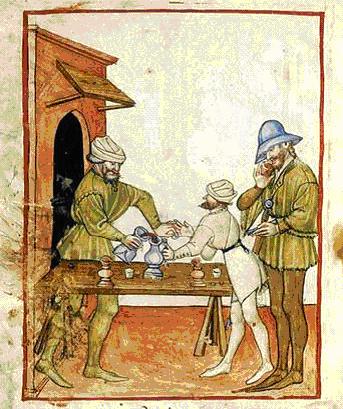


Origin of cider



The word “cider” probably derives from the Hebrew shekar or the Greek sikera which means “a strong drink”.
Cider was consumed in the Roman Empire, ancient Greece and the Middle East. The first written references date back to Roman times; in 55 BCE, Julius Caesar met the Celtic Britons fermenting cider from wild apples.
In France, the first traces written on cider date back to the 11th and 12th centuries in Normandy and in the Basque Country. Brittany only started to grow orchards from the 14th century. In the 16th century, Basque varieties were grafted onto Norman orchards.
Today, Normandy and Brittany give these varieties a favorable terroir to their development in terms of soil and climate.
The influence of Charles IX
Charles IX is known to have greatly contributed to the boom in cider production: he improved pressing techniques, the import of improved plants and the cutting of the Norman vineyard. Appreciated by both French sovereigns and the clergy, cider is part of the 15th century art de vivre. This prosperous period for the producing regions of Brittany, Normandy and Maine lasted until 1914 and was established by the work of many “pomologists” who were interested in the culture of the tree, in the selection of the best varieties and worked to improve cider-making techniques.

The influence of Charles IX

Charles IX is known to have greatly contributed to the boom in cider production: he improved pressing techniques, the import of improved plants and the cutting of the Norman vineyard. Appreciated by both French sovereigns and the clergy, cider is part of the 15th century art de vivre. This prosperous period for the producing regions of Brittany, Normandy and Maine lasted until 1914 and was established by the work of many “pomologists” who were interested in the culture of the tree, in the selection of the best varieties and worked to improve cider-making techniques.

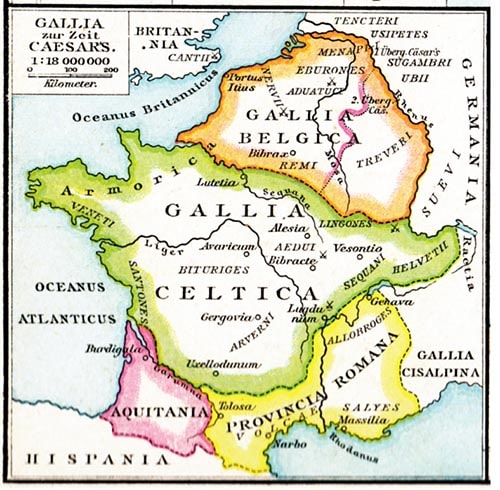

Highlights of history:
- Cider has been made in France since the Celtic Gauls (1st century BC) and also under Roman rule (100 to 300 AD).
There are historical references to the 9th century, when Charlemagne ordered the planting of apple trees in the North of France so that he could always stock up on cider. - At the time of William the Conqueror, the Norman Duke who claimed the throne of England after the Battle of Hastings in 1066: cider was widely consumed by the first Normans, because the grapes grew less well in the cool, cloudy climate of Normandy.
Highlights of history:



- Cider has been made in France since the Celtic Gauls (1st century BC) and also under Roman rule (100 to 300 AD).
There are historical references to the 9th century, when Charlemagne ordered the planting of apple trees in the North of France so that he could always stock up on cider. - At the time of William the Conqueror, the Norman Duke who claimed the throne of England after the Battle of Hastings in 1066: cider was widely consumed by the first Normans, because the grapes grew less well in the cool, cloudy climate of Normandy.
- In medieval times, as water was impure and often undrinkable in most towns and villages, many villagers in France gave up water and drank cider instead – particularly, during the epidemic plague between 1400 and 1700. Even children drank cider because it was much safer than drinking water.
- From the 1800s to the 1940s, cider making was very popular in northern France. However, it was mainly produced by each family as a drink for agricultural workers.
- The few ciders sold were bottled and corked for transport, hence their name: Cidre Bouché.
- During World War II, many apple and pear orchards were destroyed. After the war, Breton and Norman farmers invested a lot to revive the cider industry.
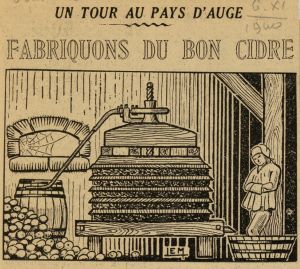
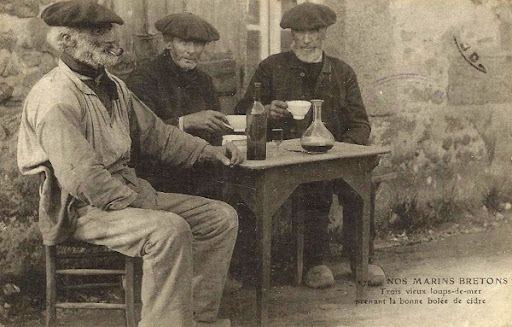




- In medieval times, as water was impure and often undrinkable in most towns and villages, many villagers in France gave up water and drank cider instead – particularly, during the epidemic plague between 1400 and 1700. Even children drank cider because it was much safer than drinking water.
- From the 1800s to the 1940s, cider making was very popular in northern France. However, it was mainly produced by each family as a drink for agricultural workers.
- The few ciders sold were bottled and corked for transport, hence their name: Cidre Bouché.
- During World War II, many apple and pear orchards were destroyed. After the war, Breton and Norman farmers invested a lot to revive the cider industry.
Sweet, Semi-dry, Dry?
The distinction between these three ciders lies in the degree of fermentation of the apple must. The Le Brun Bigoud cider house works exclusively with pure apple juice and carries out natural fermentation (indigenous fruit yeasts). The more our apple juice ferments, the more the alcohol level increases, and the more the natural sugar level is reduced. Our apple juice therefore evolves into a sweet cider, then semi-dry and finally dry. The fermentation is stopped by filtration, removing the yeasts from the cider. No pasteurization is carried out in our cider house (for ciders) because it distorts the fruit aromas, and gives the ciders aromas of cooked apples.
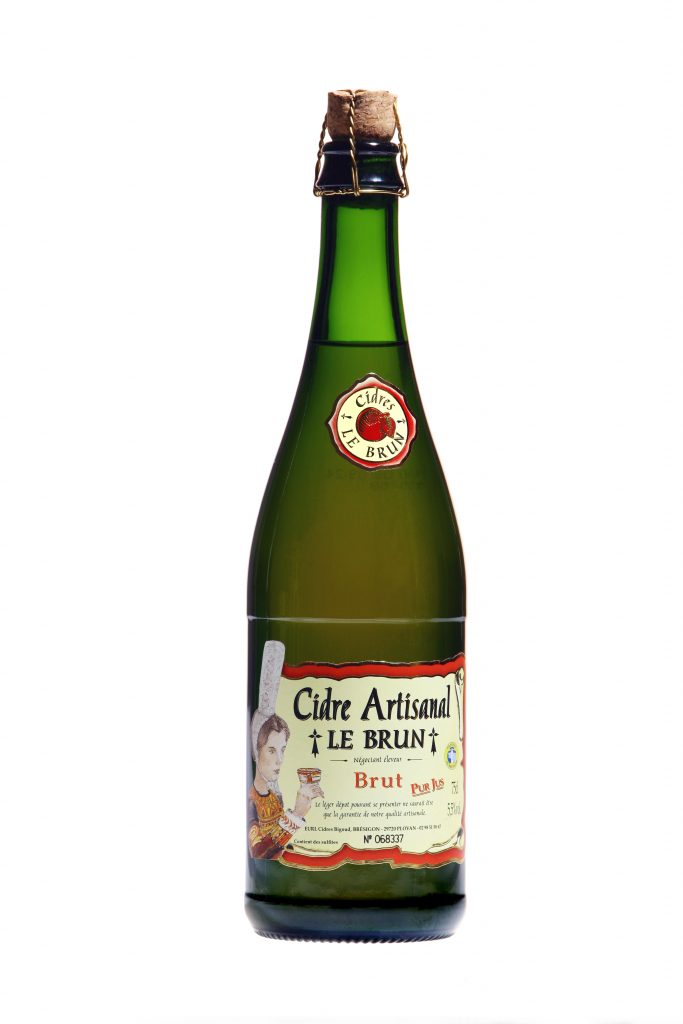
Dry cider
Raw cider is the least sweet and the most alcoholic. Its residual sugar content must be less than 28g / l and its alcohol content is between 5% and 6%. Finely sparkling with a slight bitterness in the mouth, raw cider will go perfectly with your aperitifs, buckwheat pancakes, fish dishes or white meats.

Semi-dry cider
With a sugar content of between 28g / l and 42g / l and an alcohol content of between 4 ° and 5 °, semi-dry cider is the perfect compromise between sweet and raw. Its slightly sweet and balanced taste will allow it to accompany your savory dishes as well as your sweet desserts.

Sweet cider
Sweet cider, with the shortest fermentation, and a residual sugar content greater than 35g / l, it is also the least alcoholic with a titration of less than 4 °. A cider with fruity notes and a pronounced apple taste, tasty and fresh on the palate, which will accompany your aperitif cocktails, desserts, not to mention the sweet pancakes and the galette des rois.
Some key words:
Farm or artisanal cider
Farm cider
This cider is made only from our own orchards’ apples.
Cidre Le Brun produces their own apples on their 120ha of orchards.
In 2021 we undertook a conversion to organic farming on all of our orchards.


Artisanal cider
It is made by an artisan, as opposed to an industrial cider – the producer must be registered with the chamber of crafts, he can buy his fruit outside, but must produce his cider in his workshop.
Cidre Bigoud thus produces pure juice artisanal ciders with apples sourced from producer partners including Cidre Le Brun.
Bouché cider:
As opposed to table cider, bouché cider is packaged in a Champagne bottle closed with a mushroom-type cork stopper and a muselet.

Bouché cider:

As opposed to table cider, bouché cider is packaged in a Champagne bottle closed with a mushroom-type cork stopper and a muselet.
Apple varieties
Cider apple varieties have been specifically selected for centuries for their characteristics:
- acidity
- tannin
- sugar levels
Often very astringent and bitter because of their tannins, these apples are generally not recommended for consumption.
But in a cider, they bring color, body and mouth feel.
It is then necessary to find the blend of ideal varieties to make a cider recipe.
In France, cider apples are categorized according to their sugar content:
- Sweet
- Sweet bitter
- Bitter
- Acid
Sweet apples are those that are high in sugar, low in acid, and low in tannin.
The bittersweet varieties have both high sugar content, high tannin content (> 0.2% w / v) and low acidity (<0.45% w / v).
Bitter apples have high tannin and low acidity.
Sour apples have low tannin (<.2% w / v), low sugar content and high acidity (> .45% w / v).
At Cidre Le Brun Bigoud, our terroir offers us bitter and bittersweet apples. Examples of varieties include: Juliette, Ariane, Kermerrien, Marie Ménard, Douce Moên, Peau de Chien, Douce Coêtligné – which give our ciders all their quality.
For the production of our rosé cider, we do not use any coloring. The Red Love variety enters 20% in our blend and provides us with its red flesh all the natural color for our rosé cider. It also gives this product a very refreshing acidity in the mouth which makes rosé cider the ideal drink for the aperitif.

